
|
Astronomy Picture Of the Day (APOD)
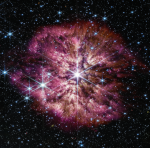 Wolf Rayet 124
Wolf Rayet 124
18.03.2023
Driven by powerful stellar winds, expanding shrouds of gas and dust frame hot, luminous star Wolf-Rayet 124 in this sharp infrared view. The eye-catching 6-spike star pattern is characteristic of stellar images made with the 18 hexagonal mirrors of the James Webb Space Telescope.
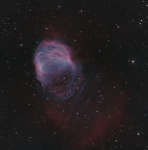 The Medusa Nebula
The Medusa Nebula
17.03.2023
Braided and serpentine filaments of glowing gas suggest this nebula's popular name, The Medusa Nebula. Also known as Abell 21, this Medusa is an old planetary nebula some 1,500 light-years away in the constellation Gemini. Like its mythological namesake, the nebula is associated with a dramatic transformation.
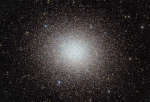 Millions of Stars in Omega Centauri
Millions of Stars in Omega Centauri
16.03.2023
Globular star cluster Omega Centauri, also known as NGC 5139, is 15,000 light-years away. The cluster is packed with about 10 million stars much older than the Sun within a volume about 150 light-years in diameter.
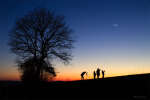 APOD: 2023 March 15 B Jupiter and Venus Converge over Germany
APOD: 2023 March 15 B Jupiter and Venus Converge over Germany
15.03.2023
This was a sky to show the kids. Early this month the two brightest planets in the night sky, Jupiter and Venus, appeared to converge. At their closest, the two planets were separated by only about the angular width of the full moon.
 APOD: 2023 March 14 B W5: The Soul Nebula
APOD: 2023 March 14 B W5: The Soul Nebula
14.03.2023
Stars are forming in the Soul of the Queen of Aethopia. More specifically, a large star forming region called the Soul Nebula can be found in the direction of the constellation Cassiopeia, whom Greek mythology credits as the vain wife of a King who long ago ruled lands surrounding the upper Nile river.
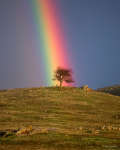 APOD: 2023 March 13 B Rainbow Tree
APOD: 2023 March 13 B Rainbow Tree
13.03.2023
What lies at the end of a rainbow? Something different for everyone. For the photographer taking this picture, for example, one end of the rainbow ended at a tree. Others nearby, though, would likely see the rainbow end somewhere else. The reason is because a rainbow's position depends on the observer.
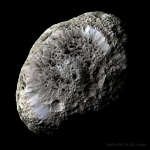 APOD: 2023 March 12 B Saturns Hyperion: A Moon with Odd Craters
APOD: 2023 March 12 B Saturns Hyperion: A Moon with Odd Craters
12.03.2023
What lies at the bottom of Hyperion's strange craters? To help find out, the robot Cassini spacecraft that once orbited Saturn swooped past the sponge-textured moon and took images of unprecedented detail.
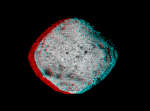 3D Bennu
3D Bennu
11.03.2023
Put on your red/blue glasses and float next to asteroid 101955 Bennu. Shaped like a spinning toy top with boulders littering its rough surface, the tiny Solar System world is about one Empire State Building (less than 500 meters) across.
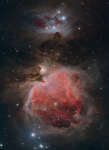 Orion and the Running Man
Orion and the Running Man
10.03.2023
Few cosmic vistas excite the imagination like The Great Nebula in Orion. Visible as a faint celestial smudge to the naked-eye, the nearest large star-forming region sprawls across this sharp telescopic image, recorded on a cold January night in dark skies from West Virginia, planet Earth.
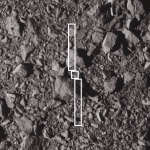 DART vs Dimorphos
DART vs Dimorphos
9.03.2023
On the first planetary defense test mission from planet Earth, the DART spacecraft captured this close-up on 26 September 2022, three seconds before slamming into the surface of asteroid moonlet Dimorphos. The spacecraft's outline with two long solar panels is traced at its projected point of impact between two boulders.
|
January February March April May |
|||||||||||||||||||||||||||||||||||||||||||||||||